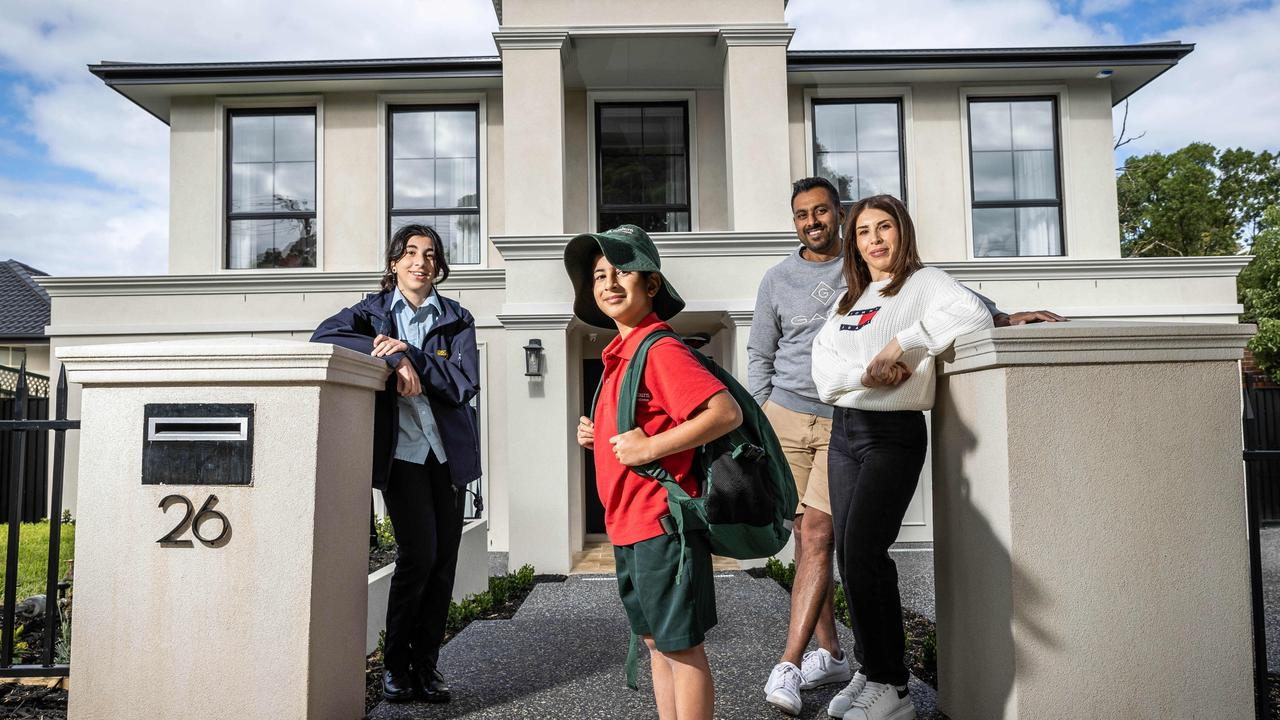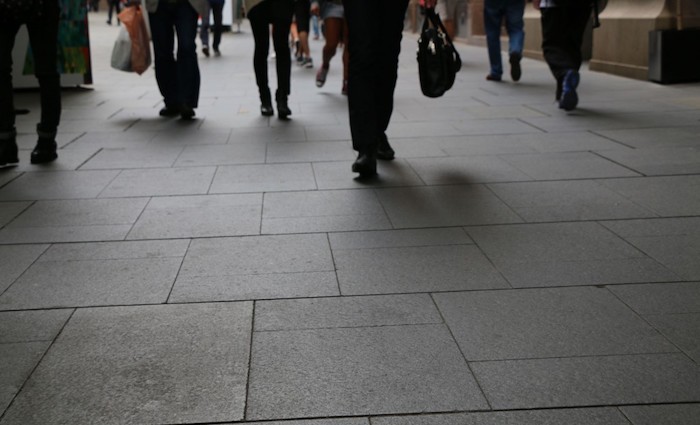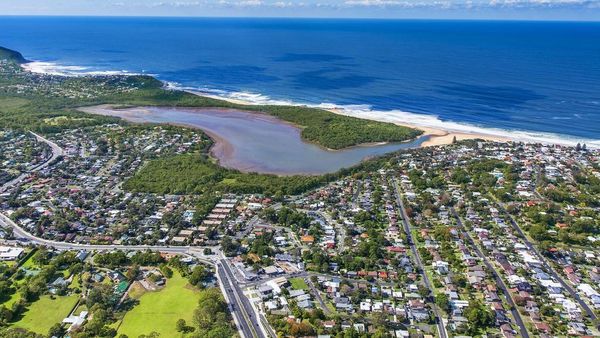An interesting shift in how we use property space
Key takeaways
- The pandemic has changed how we think about our homes, with many people wanting more space, a garden, or fewer flatmates to share that space with. The average household size has fallen, and the share of group households has declined.
- The decline in average household size increased the demand for homes, which is why rental vacancy rates returned to low levels even though population growth declined to zero.
- People’s housing choices represent a trade-off between space, place and price. The premium paid for being close to the city centre has narrowed during the pandemic and is now closer to the premium for being in a middle-ring suburb.
- Migration patterns are returning to normal, with inflows stopping and outflows continuing, and overall population growth is expected to revert to pre-pandemic patterns by 2024. However, housing supply has been expanding faster than demand for some time.
It is no surprise that the pandemic has changed how we think about our homes.
There is nothing quite like being confined to your home for months on end to make you appreciate having a home that meets your needs or rankles at one that does not.
Spurred by the experience of lockdown and self-isolation, many people understandably wanted a bit more space, and perhaps a garden.
Some also needed space where they could work, or perhaps just fewer flatmates to share that space with.
The average household size has fallen
This shift towards wanting more space has changed many people’s living arrangements – the full extent to which will be revealed in the 2021 Census results to be released in late June.
Until then, there are some intriguing and suggestive results from survey data, which show that average household size has fallen since the pandemic began (Graph below)
The share of group households declined in 2020 and has remained at this lower level.
By contrast, while some young adults moved back in with their parents at the onset of the pandemic, that shift has since reversed.
On the question of who you would rather be locked down with, at least some Australians have voted with their removalists’ van, by moving out of their share house and in with their partner.
The decline in average household size increased the demand for homes (by number).
This helps explain why rental vacancy rates quickly returned to low levels even though the international border was closed and population growth declined to be close to zero.
Roughly speaking, the decline in population growth meant that there were up to 200,000 households that didn’t arrive in Australia over the past two years, who would have done so if population growth had stayed where it was before the pandemic.
But the decline in the average size of households that were already here broadly offset this.
Across the whole Australian population of more than 25 million people, a decline in the average household size to the extent shown in the graph above would add about 140,000 households.
This is a necessarily rough calculation and, as I mentioned, we will know more when the Census results are released.
In broad terms, though, these two factors have roughly offset each other.
This suggests that the number of homes demanded didn’t change much throughout the pandemic.
There’s a broader point to be made here: things always adjust.
If average household size hadn’t declined, there would have been fewer households to fill the new homes being built.
Instead of the result being a swathe of empty homes, though, prices would have adjusted – in this case, rents.
This would have induced the demand needed to match the supply.
I am reminded of the predictions that population ageing would result in a shrinking labour force because people aged over 65 are less likely than younger people to be employed.
But, as I have noted in the past, the participation of older workers, and female workers in most age groups, increased and more than offset the effect of ageing.
The lesson here is that we shouldn’t focus only on the original shock – but rather on how people will react to that shock.
People’s housing choices changed over the past two years.
Homes with some outdoor space became even more attractive relative to small apartments.
This shift in preferences was evident both in rental and purchase markets.
Rents and prices of apartments weakened relative to those for detached houses during the early phase of the pandemic, especially in the largest cities.
Renovation activity also increased.
The desire for more space is one thing; the ability to get it is another.
For some, this choice became more feasible due to other pandemic-related shifts.
As I first described some years ago, people’s choices around housing represent a trade-off between space, place and price.
The widespread shift to working from home reduced the premium on place.
If you don’t need to commute to employment centres as often, living further out becomes more tenable.
It then becomes more feasible to get more space for a similar price, by trading off place.
A lower relative advantage of central locations will show up in their relative price.
And that is exactly what has happened.
The relative premium paid to be closer to the city centre, both in rents and purchase prices, narrowed during the pandemic.
Housing prices increased over the two years to April this year across almost all neighbourhoods in the major cities; however, in general, price increases were stronger in the outer suburbs than in inner-urban regions.
The premium for being close to the centre remains, but it is much smaller now and is closer to the premium for being in a middle-ring suburb.
It’s not always easy to trade space for place
It should be noted that the desire for more space has likely been more widespread than the ability and willingness to trade-off places.
While a large fraction of the population has experienced long lockdowns, and more than a few of us have had to self-isolate, not everyone can make the location trade-off.
Many people cannot work from home because of the nature of their work.
ABS data from the Characteristics of Employment survey showed that more than 60 per cent of managers and professionals were working from home in August last year, but only around 20 per cent of people in sales or the community and personal services sector.
And even those who can work from home at least part of the time will not be in a position to do so full-time.
The ‘laptop class’ of people who can mostly work from home on an ongoing basis are in fact a small minority – a minority, who, prior to the pandemic, were not evenly distributed across geography. Rather, they were concentrated in inner-urban, higher-priced areas.
Data from the 2020 HILDA survey suggests that around 60 per cent of people who lived within 5 kilometres of a city centre could work from home, but less than 40 per cent of those who lived more than 20 kilometres out could do so.
As a result, a shift in the location of some of the laptop classes will be more noticeable than if they had initially been more evenly spread.
Some effects will wane
In considering the effects of the pandemic on the housing market, we need to remember that only some of these shifts might last.
The desire for more space further from the office might wane over time as the memories of lockdown start to fade.
Not everyone who sought a ‘tree change’ in the regions will find that to be the right choice in the long term.
More importantly, many of the shifts in population between locations were less a change in people’s decisions than a simple interruption of the normal flows.
In broad terms, the usual pattern of net population flows is that migrants from overseas are more likely to arrive in Sydney and Melbourne, and this net flow into those cities more than offsets the usual net outflow of residents to other parts of Australia, especially Queensland.
There are variations around this trend, such as the shifting net flows into and then out of Western Australia as the mining boom peaked and declined.
But these net flows mask much larger flows in both directions from each region (see Graph below).
People move for all sorts of different reasons.
During the peak of the pandemic, some of these gross flows were impeded.
As well as the flow of overseas migration coming to an effective halt while the international borders were closed, people from parts of Australia that were not in lockdown at the time tended not to move to cities that were in lockdown.
So this wasn’t so much about city people wanting tree changes, but rather the interruption of the longstanding trend of others moving to the big smoke.
Regardless of the source of the change in population flows, though, it is undeniable that in many regional housing markets, prices and rents have increased considerably.
This is impinging on the budgets of existing residents.
It is important to be mindful of that.
Migration patterns are returning to normal.
With the inflow all but stopped and outflows continuing, population growth in Australia’s largest cities over the last two years was much weaker than in the rest of the country.
These shifts are now unwinding, with internal migration returning to a more typical pattern and overseas migration slowly starting to pick up.
Overall population growth is now expected to revert to close to pre-pandemic patterns by 2024.
It will take a little while for students and other migrants to return in the numbers that were seen before the pandemic.
Importantly, official projections do not embody any catch-up from the period of closed borders.
This implies that the population level is on a permanently lower track than would have been expected had the borders not been closed.
While the local market implications of this will be important, it is also worth considering the national picture.
The sharp decline in population growth stemming from pandemic-related border closures occurred at the same time as the housing stock continued to expand (see Graph below).
Much of the additional supply will have been absorbed by the decline in household size noted earlier.
Even so, the net effect is likely that housing supply has for a number of years been running ahead of what would normally be thought of as trends in demand.
By Luci Ellis
Originally published by Property Update








